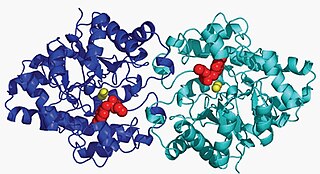
Pseudomonas is a genus of Gram-negative, Gammaproteobacteria, belonging to the family Pseudomonadaceae and containing 191 validly described species. The members of the genus demonstrate a great deal of metabolic diversity and consequently are able to colonize a wide range of niches. Their ease of culture in vitro and availability of an increasing number of Pseudomonas strain genome sequences has made the genus an excellent focus for scientific research; the best studied species include P. aeruginosa in its role as an opportunistic human pathogen, the plant pathogen P. syringae, the soil bacterium P. putida, and the plant growth-promoting P. fluorescens, P. lini, P. migulae, and P. graminis.

Pseudomonas aeruginosa is a common encapsulated, Gram-negative, rod-shaped bacterium that can cause disease in plants and animals, including humans. A species of considerable medical importance, P. aeruginosa is a multidrug resistant pathogen recognized for its ubiquity, its intrinsically advanced antibiotic resistance mechanisms, and its association with serious illnesses – hospital-acquired infections such as ventilator-associated pneumonia and various sepsis syndromes.

Tobramycin is an aminoglycoside antibiotic derived from Streptomyces tenebrarius that is used to treat various types of bacterial infections, particularly Gram-negative infections. It is especially effective against species of Pseudomonas.
Pseudomonas rubescens is a Gram-negative soil bacterium that was originally isolated from the oil in a machine shop. The type strain is ATCC 12099.
Pseudomonas coenobios is a Gram-negative, non-sporulating, motile, rod marine bacterium. The type strain is ATCC 14402.
Pseudomonas perolens is a Gram-negative, non-sporulating, motile, rod bacterium that is known to cause mustiness in eggs in Poland. The type strain is ATCC 10757.
Pseudomonas suis is a Gram-negative bacterium that causes croupous pneumonia of swine from which it derives its name. It was first isolated in the Philippines. The type strain is ATCC 11729.
Pseudomonas reptilivora is a fluorescent, yellow-green, Gram-negative, rod-shaped, non-spore-forming, multiple polar flagellated, motile bacterium that is pathogenic to reptiles. It was originally isolated in Gila monsters, horned lizards, and chuckawallas. The type strain is ATCC 14836.
Pseudomonas septica is a Gram-negative, rod-shaped, non-spore-forming, bacterium that is pathogenic to insects. It was first isolated on the weevil Xyloterus lineatus. The type strain is ATCC 14545.
Pseudomonas turbinellae is a Gram-negative bacterium that causes bacterial leaf spot. It was first isolated on Cleome monophylla. The type strain is ATCC 12446.
Pseudomonas otitidis is a Gram-negative bacterium that causes otitis. The type strain is ATCC BAA-1130.
Pseudomonas tuticorinensis is a Gram-negative, marine denitrifying bacterium. The type strain is ATCC 12230.

Aryldialkylphosphatase is a metalloenzyme that hydrolyzes the triester linkage found in organophosphate insecticides.
In enzymology, a guanidinobutyrase (EC 3.5.3.7) is an enzyme that catalyzes the chemical reaction
In enzymology, a mandelamide amidase (EC 3.5.1.86) is an enzyme that catalyzes the chemical reaction
5-exo-hydroxycamphor dehydrogenase (EC 1.1.1.327, F-dehydrogenase, FdeH) is an enzyme with systematic name 5-exo-hydroxycamphor:NAD+ oxidoreductase. This enzyme catalyses the following chemical reaction
(2,2,3-Trimethyl-5-oxocyclopent-3-enyl)acetyl-CoA 1,5-monooxygenase (EC 1.14.13.160, 2-oxo-Delta3-4,5,5-trimethylcyclopentenylacetyl-CoA monooxygenase, 2-oxo-Delta3-4,5,5-trimethylcyclopentenylacetyl-CoA 1,2-monooxygenase, OTEMO) is an enzyme with systematic name ((1R)-2,2,3-trimethyl-5-oxocyclopent-3-enyl)acetyl-CoA,NADPH:oxygen oxidoreductase (1,5-lactonizing). This enzyme catalyses the following chemical reaction
2,5-diketocamphane 1,2-monooxygenase (EC 1.14.14.108, 2,5-diketocamphane lactonizing enzyme, ketolactonase I, 2,5-diketocamphane 1,2-monooxygenase oxygenating component, 2,5-DKCMO, camphor 1,2-monooxygenase, camphor ketolactonase I) is an enzyme with systematic name (+)-bornane-2,5-dione,NADH:oxygen oxidoreductase (1,2-lactonizing). This enzyme catalyses the following chemical reaction
Aminobacter niigataensis is a bacterium from the genus of Aminobacter which was isolated from soil.

Pseudomonas virus gh1 is a bacteriophage capable of infecting susceptible strains of Pseudomonas putida. It is a member of family Podoviridae, subfamily Autographivirinae. It was first isolated in 1966 from a sample taken from the aeration tank at a sewage plant in East Lansing, Michigan.




